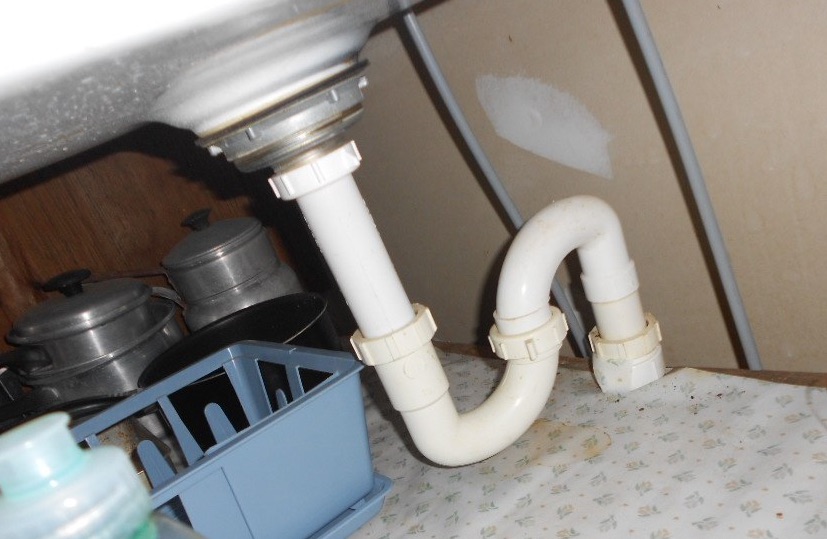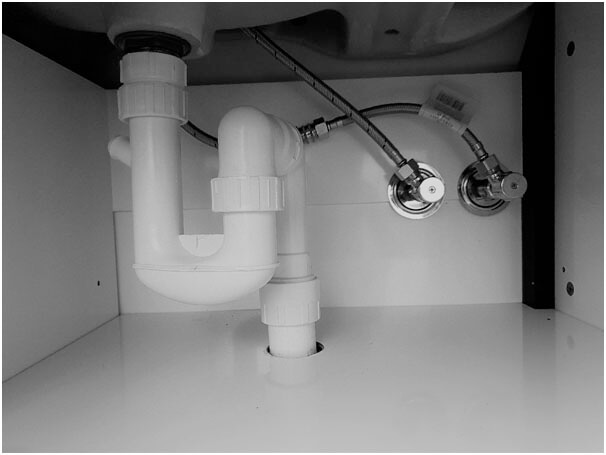The Reasons Why Adequate Ventilation is Essential for Plumbing Systems
The Reasons Why Adequate Ventilation is Essential for Plumbing Systems
Blog Article
Just how do you feel on the subject of Why Plumbing Air Vents Are Important?

Appropriate ventilation in pipes systems is frequently forgotten, yet it is important for keeping the performance and security of your home's pipes. Ventilation assists manage air pressure, avoid the accumulation of unsafe gases, and guarantee the effective elimination of waste. In this overview, we will check out the value of correct plumbing ventilation, how it functions, and the benefits it gives your plumbing system.
Comprehending Air Flow in Pipes
Ventilation in plumbing describes the network of pipelines that permit air to flow via the water drainage system. These vents offer several objectives, including managing air pressure within the pipes, stopping sewage system gases from getting in the home, and helping in the smooth flow of wastewater.
Just How Ventilation Functions in Pipes Systems
Atmospheric Pressure Guideline
Proper air flow maintains well balanced air pressure within the pipes system. When water flows with pipelines, it displaces air. Without sufficient air flow, this displacement can produce unfavorable stress, leading to reduce drains pipes or siphoning of water from catches, which can trigger unpleasant odors to permeate right into the home.
Avoiding Sewer Gas Build-up
Among the most crucial functions of pipes vents is to prevent sewer gases, such as methane and hydrogen sulfide, from accumulating within the home. These gases can pose major wellness risks and are highly combustible. Vent pipelines permit these gases to run away securely outdoors.
Helping in Waste Removal
Ventilation assists in the efficient elimination of wastewater by protecting against airlocks in the drain system. When air can stream freely via the vents, it enables water and waste to flow efficiently with the pipelines, lowering the danger of clogs and backups.
Sorts Of Plumbing Vents
Main Heap Vent
The primary stack vent, likewise called the air vent stack, is the key vent in a plumbing system. It extends from the main drainpipe align through the roofing, allowing gases to run away and fresh air to go into the system.
Branch Vent
Branch vents link to the main stack air vent and serve private fixtures, such as sinks, toilets, and showers. These vents guarantee that each component has adequate ventilation to function effectively.
Air Admission Shutoff (AAV).
An Air Admission Shutoff (AAV) is a one-way shutoff that permits air to get in the pipes system without the demand for a traditional vent pipeline expanding via the roof covering. AAVs are generally made use of in improvements or locations where mounting a standard air vent is not practical.
Indicators of Poor Ventilation in Pipes.
Slow Draining Fixtures.
If your sinks, tubs, or commodes are draining gradually, it could be an indication of inadequate ventilation. Poor air circulation can create a vacuum effect, making it tough for water to drain pipes properly.
Gurgling Seems.
Gurgling sounds coming from drains pipes are typically a result of air being drawn with water catches as a result of negative stress in the pipes. This is a clear indication of inadequate air flow.
Unpleasant Smells.
Sewer smells inside your home are a warning that your plumbing system is not effectively ventilated. This might suggest that sewer gases are not being adequately vented outside, leading to potentially unsafe problems.
Usual Air Flow Errors.
Inadequate Vent Sizing.
Using small air vent pipes can lead to inadequate air circulation and stress discrepancies in the system. It's important to utilize vents that satisfy the specific demands of your pipes system.
Improper Vent Positioning.
Placing vents as well far from the fixtures they serve can reduce their performance. Appropriate placement makes sure that air can stream freely and efficiently via the system.
Ignoring Code Needs.
Building regulations provide certain standards for plumbing air flow. Ignoring these codes can lead to a system that falls short to function properly and might lead to costly repair services or carcinogen.
Advantages of Proper Ventilation.
Boosted System Efficiency.
Appropriately ventilated plumbing systems run more effectively, with fewer blockages, faster draining pipes, and less stress on the pipes. This performance extends the life-span of the plumbing system.
Improved Air High Quality.
By avoiding sewage system gases from entering your home, appropriate ventilation contributes to far better indoor air quality, making your living environment healthier and a lot more comfortable.
Avoiding Water Damage.
Ample air flow helps protect against water from being siphoned out of catches, which can lead to sewage system gases going into the home and creating water damage with time.
Steps to Make Certain Appropriate Air Flow.
Consulting Plumbing Codes.
Always speak with regional pipes codes when designing or customizing your pipes system. These codes supply the required guidelines for correct venting and guarantee your system fulfills safety criteria.
Normal Evaluation and Upkeep.
Regular inspections can assist identify potential ventilation issues before they become significant troubles. Upkeep tasks, such as cleaning up vent pipes and looking for obstructions, are necessary for keeping the system in good working order.
Specialist Installment.
For brand-new installations or significant modifications, it's wise to work with an expert plumbing professional. They have the proficiency to make certain the ventilation system is correctly created and installed according to code.
Verdict.
Proper air flow is a vital part of any pipes system, ensuring that it works successfully and safely. By comprehending the value of air flow, acknowledging the indications of inadequate air flow, and taking actions to keep your system, you can protect against costly issues and secure your home's air quality.
4 Things You Should Know About Your Plumbing Vents
What Plumbing Vents Are
Also called a vent stack, a plumbing vent is a vertical pipe attached to your drain line that runs through your roof. The plumbing vent pipe, or plumbing air vent, removes gas and odors from your plumbing system and allows fresh air to enter the pipes, helping the water to flow out of the drain pipes.
What Plumbing Vents Do
Plumbing vents have two basic functions. One of which is to allow unpleasant smelling wastewater and sewer gasses to escape your plumbing system instead of entering your home. Plumbing vent pipes are typically located on roofs, away from windows, to ensure the fumes exit the home completely.
The other function of the plumbing vent is to move fresh air into your plumbing system. This helps move water through every plumbing fixture in your house, like toilets and sink drains. Think of the way in which you need to let a little air into the bottle as you pour soda in order to make the drink flow smoothly.
Different Types of Plumbing Vents
True vent: This is the most common vent option. In simplest terms, a true vent is a vertical pipe attached to your drain line that exits through the roof. They often function as the main vent that other fixtures can connect to. Re-vent pipe or auxiliary vent: Attached to the drain line near specific plumbing fixtures, re-vent pipes run up and over to connect to the main vent. Common vent: Two plumbing fixtures installed on opposite sides of a wall are typically tied into the vent stack using something known as a sanitary cross. Wet vent: This venting option operates as a drain pipe and a vent at the same time. Wet vent drainage systems drain water from one fixture while venting the air from another. Although they’ve been used for over 100 years, wet vent systems have only recently been added to the plumbing code in many areas. If you’re planning on installing one in a bathroom remodel, make sure you check your local code prior to construction. Loop vent: For free-standing fixtures like kitchen island sinks, loop vents are ideal. These vent pipes run under the floor, rise from the P-trap, and create a loop inside the cabinet sink. Air admittance valve: An AAV is a one-way mechanical valve typically installed at the site of the plumbing fixture. AAVs allow venting to occur without having to tie into a larger venting system. They’re ideal for venting fixtures where you aren’t able to easily connect to an existing vent system. Common Plumbing Vent Issues
Although vent pipes typically don’t have water flowing through them, they’re still subject to many typical plumbing issues. For example, clogs are one of the most common problems associated with sewer vent pipes. If your vent pipe gets clogged, all of your plumbing fixtures tied into the vent stack will be affected.
A sink with a slow drain that bubbles and gurgles or a strong sewage smell around your toilet are both indicators that your toilet vent pipe is clogged. Because most vent pipes exit through the roof, old leaves, twigs or even a bird’s nest could be clogging the pipe.
Clogs in your vent pipe system cause a buildup of negative pressure, meaning that water won’t be able to flow out of your home very well. It’s similar to putting your finger over the opening of a straw to trap water inside. When you remove your finger, the water is able to flow out of the straw.
If you suspect you have any blockage in your vent, make sure you have a professional come examine the situation. Left unchecked, a blocked air vent can lead to other costly repairs, like leaks and sediment buildup.
Under Pressure
Pipe vents are essential aspects of a home’s plumbing system. Owning a home means learning about all sorts of things you never put much thought into before. But by understanding as much as you can about the important systems of your home, you can keep those budgets intact and those anxiety levels low.
https://www.homeserve.com/en-us/blog/home-improvement/plumbing-vents/

I came across that blog posting about What Are Plumbing Vents and Why Are They Important? when perusing the internet. Those who enjoyed reading our post please do not forget to pass it around. Thanks for your time. Please check our blog back soon.
Book Your Installation Report this page